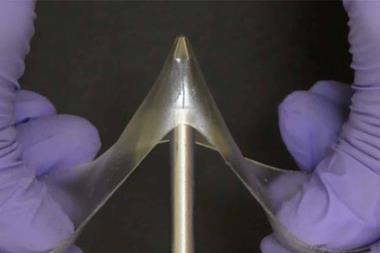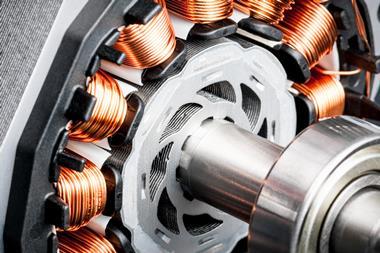Magnetic levitation is a technology best known in maglev trains, which allow a train to travel without friction by lifting it off its rails using electromagnetic induction. In 2021, however, Hamdi Ucar at Göksal Aeronautics in Turkey left physicists scratching their heads after he demonstrated a phenomenon that no known type of magnetic levitation – or seemingly the laws of classical electromagnetism at all – could explain.
When a permanent ‘rotor’ magnet was rotated at around 200Hz perpendicular to its north–south axis, another magnet, nicknamed the ‘floater’, could levitate above it, spinning synchronously with the rotor with its magnetic field oriented perpendicularly to the rotor’s axis of magnetisation. It therefore developed a permanent north or south pole at the top or bottom.
In new work, Rasmus Bjørk and colleagues at the Technical University of Denmark set out to discover the exact origins of this curious phenomenon. They found several new details, such as that smaller floaters sat farther from the rotor in equilibrium. And crucially, the floater did not rotate with its axis precisely perpendicular to the plane of the rotor but with an offset of about 7°. Bizarrely the north pole would tilt towards the north pole of the rotor and the south pole would follow the south pole.
After considering several other possible explanations and using computer models to estimate their possible contributions, the researchers concluded that only this offset could explain the levitation. The angle between the two planes leads the rotor to feel a vertical magnetic field, which pushes its motion back towards alignment and stabilises its levitation like a gyroscope.
‘It turns out that the floater magnet wants to align itself with the spinning magnet, but it cannot spin fast enough to do so. And for as long as this coupling is maintained, it will hover or levitate,’ said Bjørk. ‘You might compare it to a spinning top. It will not stand unless it is spinning but is locked into position by its rotation. It is only when the rotation loses energy that the force of gravity – or in our case, the push and pull of the magnets – becomes large enough to overcome the equilibrium.’
References
1 JM Hermansen et al, Phys. Rev. Applied, 2023, 20, 044036 (DOI: 10.1103/PhysRevApplied.20.044036)
2 H Ucar, Symmetry, 2021, 13, 442 (DOI: 10.3390/sym13030442)



























1 Reader's comment